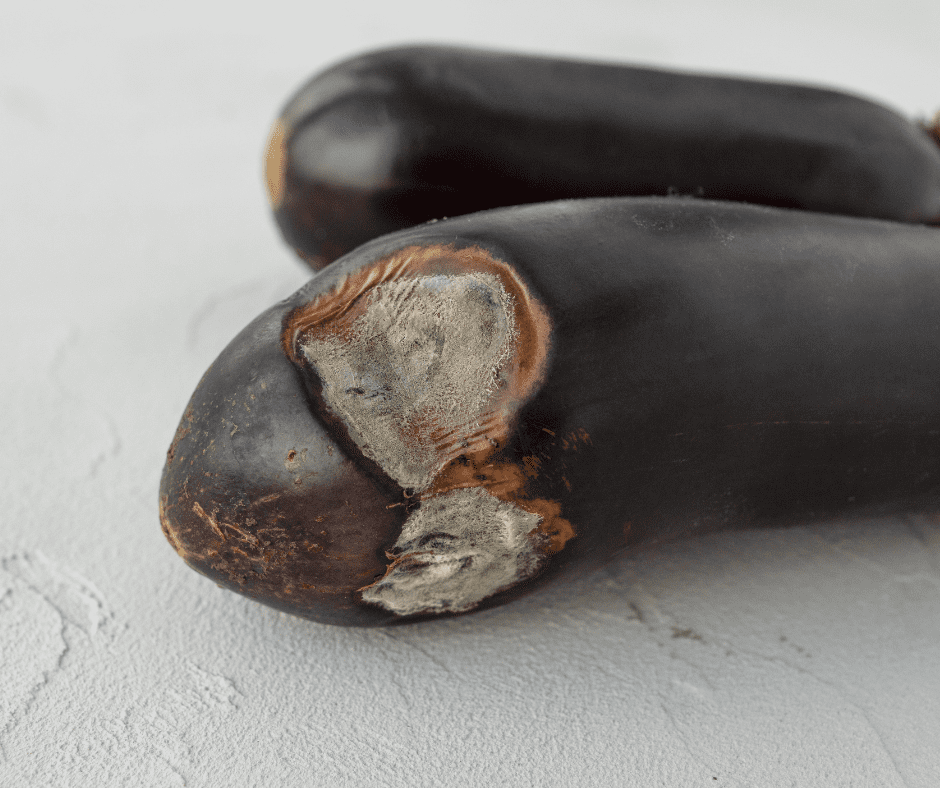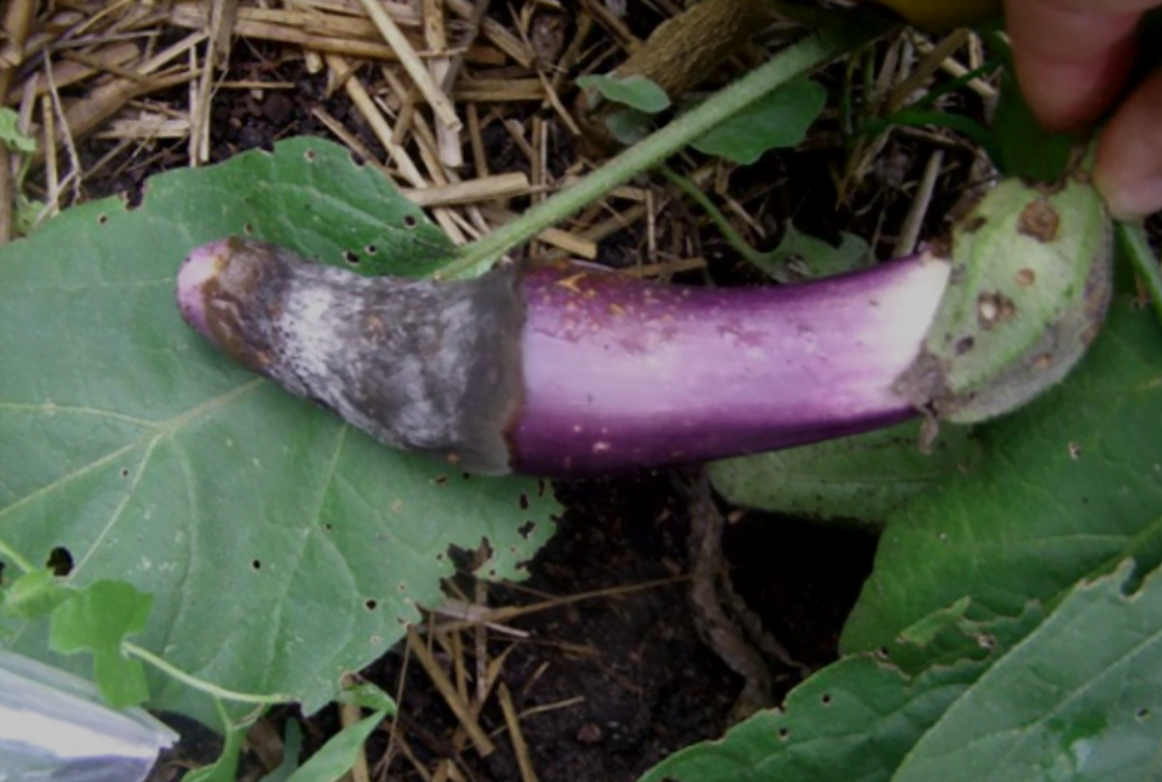Table of contents of the article
ToggleOn your website WORLD OF PLANTS, gray mold is a common fungal disease that affects eggplant plants, affecting the quality and productivity of the crop. In this article, we highlight its most important symptoms and ways to combat it.
What is gray mold disease?
Gray rot is a common plant disease caused by the gray mold fungus (Botrytis cinerea) that is widespread throughout the world. As a plant pest, this fungus can attack more than 235 host plants and therefore has a wide host spectrum.
Gray mushrooms find the best living conditions at temperatures between 22 and 25 degrees Celsius. But even high temperatures do not bother this pathogen. Fungi can be found almost everywhere in the garden, especially with a humid environment, but a gardener will also often find mold on his or her plants in a greenhouse or houseplant.
Gray mold life cycle
Once the pathogen covers the host plant with its typical velvety cover, the fungus initiates a process called apoptosis in the cells of the affected plant parts. This process affects the cell's metabolism so negatively that it eventually dies. The result is decay of plant tissue and rot.
The mold pathogen overwinters as small, persistent, black, resistant bodies – so-called sclerotia – on dead plant parts in the soil. The spores are spread by rain, splashing, and wind and are thus transmitted to other plants. High humidity and high temperature help the rapid spread of pathogens, especially in species and varieties with dense leaves. The fungus can remain in the soil until it finds optimal conditions for germination – this can sometimes take several years.
Symptoms of gray mold on eggplant
The gray fungus can be identified by brown spots on leaves, stems, flowers, buds, fruits and shoot tips. Woody shoots can also be affected. A gray-colored fungal herb develops on the affected parts of the plant.
Many plants are often weakened by infection, so that the entire plant can die. The yield of fruit trees and vegetable plants also decreases significantly when infected with gray mold.

Massive dark gray growths can be observed on the leaves, fruits or pods.
The presence of spots of fungal growth on the tissues.
Parts of the plant or the plant as a whole may wither, turn brown, and die (drop).
Occasionally, shoot dieback and canker formation have been observed on woody trees
These symptoms are caused by the soil-borne fungus Botrytis cinerea, which can grow and infect all parts of the plant. The onset of symptoms is enhanced by the presence of wet weather with frequent precipitation and cold temperatures. The optimum temperature recorded for fungal growth, plant colonization and disease development is 15 to 20°C. Symptoms first appear on leaves or plant parts that have been mechanically injured during field work or through hail or frost. The lower leaves are most susceptible to infection. Excessive watering and dense shade may increase the level of the disease by providing a moist, dense environment conducive to fungal growth
Preventive measures for gray mold on eggplant
- Use sound planting materials from approved sources.
- Resistant plants or tolerant varieties of crops.
- Early or early maturing plant varieties.
- The disease spreads in winter when humidity is high, especially inside uncovered greenhouses, as well as during transportation and storage
- Maintain a reasonable distance between plants.
- Ensure the plants are lined up straight.
- Use mulch to weaken the fungal life cycle and reduce inoculum.
- Ensure good drainage of the site and avoid inappropriate irrigation.
- Do not over fertilize crops.
- Be careful not to injure plants when working in this field.
- Monitor the field and remove decaying plant tissue.
Prevention and prevention of gray mold on eggplant
- Preventive measures against gray mold relate in particular to general cultivation and care of various plants. Therefore, find out in advance the individual requirements of your plantings. Try to provide unfavorable living conditions for the fungus in advance, because once the fungus has spread to your plants, it is difficult to combat the spreading pathogen.
- In addition to the optimal location, extensive crop rotation and frequent change of location of ornamental plants is recommended.
- Mixed planting with garlic, for example, also has a protective effect against gray mold. If available, you should look for less allergenic varieties when purchasing your plants.
- A well-ventilated site and permeable soil reduce the risk of infection.
- Also make sure there is enough space between plants when planting.
Methods of treating gray mold on eggplant
As soon as you notice gray rot on your plants, you should act immediately otherwise, the fungus will spread quickly and affect other plants. The earlier a fungal infestation is detected, the greater the chance that infected plants will recover. Therefore, it is advisable to check your plants regularly for diseases and their accompanying symptoms.
. If you notice gray mold, you should immediately remove diseased parts of the plant. To do this, cut the affected areas back to healthy tissue with sharp pruning shears. Then completely disinfect all materials after completing the work. . Dispose of infected plant parts in household waste – compost is not a suitable place, as fungal spores easily live there and can return to the garden through the compost soil in
Organic control of gray mold disease on eggplant
Biocides containing the competitive fungicide Trichoderma harzianum are effective against gray mold on a wide range of crops. Products based on Streptomyces griseovirides are also available for use on lettuce.
Organic control of gray mold disease on eggplant
Always follow integrated approaches with preventive measures together with biological resistance, if available. Controlling this fungus is difficult because it may colonize host plants near the time of harvest, and therefore the use of chemicals that leave toxic effects is prohibited. In case of early infection, foliar spray with chlorothalonil can be used to control its spread. Other fungicides containing fluazinam and thiophant methyl can also be effective. The development of resistance may be common when fungicides are used extensively
In conclusion, we would like to note that we, at the world of plants website, offer you all the necessary services in the world of plants, we provide all farmers and those interested in plants with three main services::-
- Artificial intelligence consulting service to help you identify diseases that affect plants and how to deal with them.
- Blog about plants, plant diseases and care of various crops ... You are currently browsing one of her articles right now.
- An application that provides agricultural consultations to clients, as well as a service for imaging diseases and knowing their treatment for free – Click to download the Android version from Google Play Store، Click to download the IOS version from the Apple App Store.

Sources
Botrytis mold (gray mold) – plantix
Gray mold disease: its causes and how to treat it - nabatat




